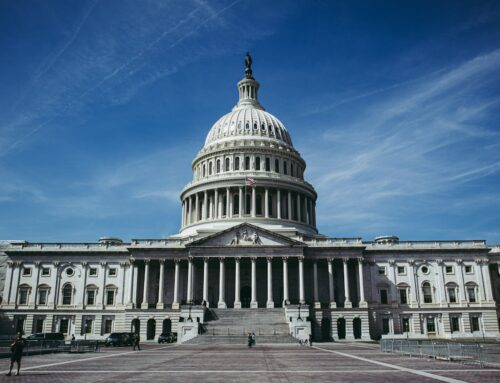Tax day is here again. Whether or not you’ve already spent your refund or will be running to the post office or hitting the submit button at 11:59 tonight, today is a day we all think about just how much we paid in taxes over the past year and where those tax dollars were spent.
At Taxpayers for Common Sense, we see tax day as an opportunity to focus on the possible: What Congress could be doing to put us on a sustainable fiscal path, both by eliminating budget items that are wasteful and by cleaning up and reforming the tax code. Each year, we allow hope to triumph over experience and provide recommendations for moving forward, despite the evidence that Congress seems to prefer the status quo over the cooperation required.
This year, we are releasing two sets of recommendations to help Congress move in the right direction: a set of principles for business tax reform and a cut list outlining specific steps Congress can take to move toward meaningful deficit reduction.
We’ve published our principles for tax reform on this page before, but today we had a chance to submit our comments to the Tax Reform Working Groups created by Senate Finance Committee Chairman Orrin Hatch, R-Utah, and ranking member Sen. Ron Wyden, D-Ore., to analyze current tax law and examine policy trade-offs and available reform options. Our principles of increasing fairness and simplicity, taxing things we don’t want and building in oversight, among others, point toward improving the performance of the tax code for all Americans.
Our cut list, “Common Sense Cuts for the 114th Congress: Silencing Sequester Scaremongers with $2 Trillion in Deficit Reducti.png” is a sampling of programs spanning the federal government that represent good ways to save some taxpayer money. These items should be low-hanging budgetary fruit on both sides of the ledger. We outline both the spending and the tax provisions we think are most ripe for reform:
- Cancel the unaffordable F-35 Joint Strike Fighter. Fifteen years ago, the Pentagon budget for fiscal year 2001 stated the planned dates for initial operational capability of the F-35 were fiscal years 2005 for the Air Force, 2006 for the Marine Corps and 2008 for the Navy. These have most recently been shifted to fiscal years 2016 for the Air Force, 2015 for the Marines and 2018 for the Navy – roughly a decade behind schedule. As a result, at least $39.1 billion has been spent that was never in the Pentagon’s original program costs for the F-35. This single aircraft program accounted for $6.3 billion, or just under 7 percent, of the entire Pentagon unclassified procurement request in fiscal year 2015. Cutting our losses on this project and purchasing extremely capable and more affordable F-15, F-16, and F/A-18s could save $51 billion.
- Repeal the Domestic Production Activities Deduction (Section 199). This is a policy that has a demonstrated track record of failure. Although the stated concern of Congress for enactment of Section 199 was the retention of U.S. manufacturing jobs and investment, the deduction applies to many activities that could not realistically be sent abroad, like the construction of residential or commercial buildings, swimming pools, parking lots, roads and sidewalks. Not surprisingly, the level of domestic manufacturing appears unaffected by its introduction. Almost a decade after enactment, the level of domestic manufacturing has continued its steady decline since the 1950s. Cutting this policy could save $135 billion.
- Eliminate the Shallow Loss Programs for agribusiness. The 2014 farm bill created new income entitlement programs for agribusinesses, referred to as “shallow loss” subsidies. The three programs – Agriculture Risk Coverage, Supplemental Coverage Option and Stacked Income Protection Plan – are intended to kick in when revenue drops as little as 10 percent from a predetermined level. These programs effectively eliminate financial risk for agricultural producers of corn, soybeans, wheat and cotton, while more than 60 percent of farmers receive no government assistance at all. We could save $22 billion by cutting these subsidies.
We’ve got plenty more suggestions where these came from, enough to reduce the deficit by $2 trillion over the next 10 years. One of the only things policymakers on both sides of the aisle and both ends of Pennsylvania Avenue seem to agree on is their mutual hatred of the Budget Control Act of 2011 and the spending caps that legislation established. But instead of railing against them, or attempting creative ways to evade them, lawmakers should look for ways to relieve the caps in fiscally responsible way. We’ve shown that it is not an impossible task. It is past time for Congress and the president to make some hard, but overdue, decisions.











Get Social